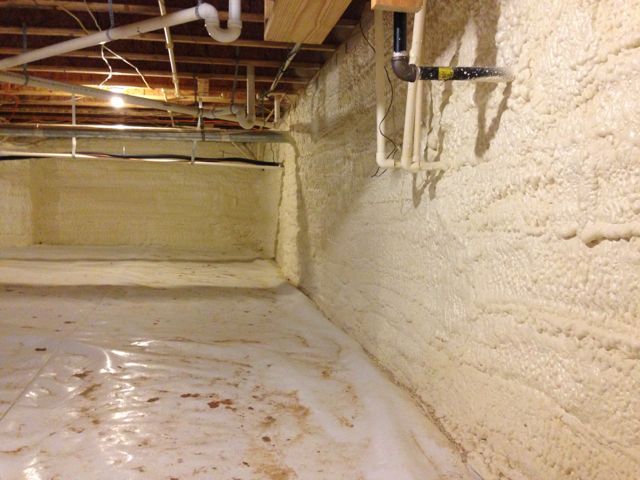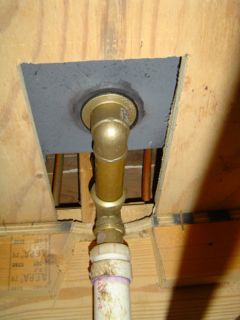Building Science Schmilding Science; Let’s Do Things Right in 2014

We’re a few days into 2014 now. A lot of homes got built last year, and a lot got renovated, too. Quite a few homes got home energy ratings, and even more had blower door tests. Spray foam attics and encapsulated crawl spaces also grew in popularity. Since the economy is heating up a bit, the numbers will probably be higher this year. But are things improving?
We’re a few days into 2014 now. A lot of homes got built last year, and a lot got renovated, too. Quite a few homes got home energy ratings, and even more had blower door tests. Spray foam attics and encapsulated crawl spaces also grew in popularity. Since the economy is heating up a bit, the numbers will probably be higher this year. But are things improving?
We’re doing better
I think the answer to that question is definitely yes. The two main causes of the improvement are voluntary programs like ENERGY STAR for new homes and better building codes. Here are a few of the ways that improvement is showing up:
Homes are more airtight. We’ve had mandatory blower door testing in Georgia since 2011. The threshold builders have to hit is 7 ACH50 or lower. By just doing the basic air-sealing, many of them are hitting 4 or 5 ACH50 without difficulty. I’ve heard similar stories from other states.
Homes are better insulated. Two words: energy code. Those long ignored pieces of paper have gained a lot of momentum this century. In addition to increasing airtightness, energy codes call for more insulation and special attention to features like attic kneewalls. Oh, yeah. Tighter homes means the insulation performs better, too, because it doesn’t have as much air moving through it.
Duct leakage is decreasing. In addition to the requirement for blower door tests, energy codes are also requiring tests for duct leakage. In Georgia, new homes can have no more than 8 cfm per 100 square feet of conditioned floor area. Without testing, they were averaging about 3 times that amount.
Windows are better. High-performance windows with low-e coatings are required in more and more places. Since even windows are the weak point for heat flow in building enclosures, this is good news. They’re still bad compared to walls, but they’re often three times better than they used to be.
We still have work to do
 Too many people still believe the myths. You know, like that one about how you shouldn’t seal up a house too tight because a house needs to breathe. Yes, I still run into home builders who believe this.
Too many people still believe the myths. You know, like that one about how you shouldn’t seal up a house too tight because a house needs to breathe. Yes, I still run into home builders who believe this.
HVAC is still a mess. We may be getting the ducts tighter by requiring testing, but we haven’t gone all the way to good design and commissioning. And without either of those, you end up ductopus systems, flaccid flex duct, and undersized return ducts that starve the system for air.
Airtight homes need mechanical ventilation. This should go without saying. Why then do some homes with spray foam insulation have no mechanical ventilation systems? Currently, energy codes do not require ventilation systems, but we’re about to see some interesting maneuvering as the 2012 IRC gets adopted in states that are on the 2009 IECC. (More on that later.)
It’s a new year!
But we can take the renewed energy of a new year and forge ahead. We can slay those old myths once and for all. We can reassure designers, builders, and trade contractors that despite the debates over things like the right ventilation rate, you still need a ventilation system.
As I’ve done for 6 of the past 8 years, I celebrated the new year at the Possum Drop party. This was the year of the Possum Dragon (or Possumdactyl, depending on who you talked to). As midnight approached, the newly crowned Possum Queen led the countdown and the Possum Dragon descended into the bonfire. Once again—and perhaps surprisingly—the house did not burn down and no one was injured.

I also learned something new this year. The chicken wire frame on which the possum is built is the same one that’s been used for several years now. So what we really had was not a Possum Dragon but a Possum Phoenix. After getting burnt to ashes a few days ago, it will resurrect itself and be reborn on New Year’s Eve at the end of the year.
In the same way, we can renew ourselves and our dedication to analyzing, designing, building, and improving homes. Sometimes in the heat of the battles we fight, it feels as if we’re being burnt to a crisp. Those fires are necessary, though. They help make us stronger and renew our spirits.
Happy New Year!
Related Articles
The State of Building Science in the Post-Mayan Non-Apocalypse
Energy Vanguard’s 25 Ridiculous, Made-up Predictions for 2012
Possums, Dilbert, & Happy Caulkers – A Building Science Blog’s Growth
This Post Has 12 Comments
Comments are closed.

As homes get tighter HVAC
As homes get tighter HVAC systems need to be downsized. During the last 40 years homes have got MUCH tighter yet silly rules like “25BTU per sqft and 500sqft per ton are still being used to size HVAC systems. A 2 burner furnace will heat the majority of homes in the southern climate zones, but 3 or 4 burner furnaces are still what is typically installed. AC units are still being sized 500sqft per ton, even though a tight house only needs about 1/2 that.
The HVAC sizing madness needs to STOP!!
The photo at the top of your
The photo at the top of your “Building Science Schmilding Science; Let’s Do Things Right in 2014” post shows an encapsulated crawl space. It looks great, but isn’t there a potential for termite problems? Is there such a thing a too dry of a crawl space? I remember once being told that hardwood floors would react badly if the vapor barrier in crawl spaces was allowed to meet the foundation walls!
Thanks.
The pic of the encapsulated
The pic of the encapsulated crawl space above is somewhat unclear where plastic floor meets foamed sidewall … thought plastic was to go OVER face of foam so any wall condensation would drain through soil … how is this treated?
Bob: Yep.
Bob: Yep. We still have work to do there.
Doug T.: Yes, in termite country, which this house is located in, there should be an inspection gap so the little munchers can’t go from the ground into the framing without being seen. You can’t really tell from this photo, but they didn’t spray foam on the mudsill. They did take it all the way to the top of the foundation wall, however. Yes, I guess a crawl space can be too dry if the wood dries out and shrinks too much. That’s not really a danger in most crawl spaces. On the contrary, it’s more likely that they’ll still need some way to dehumidify the air after it’s all sealed up. See my article, What Is the Best Way to Deal with Crawl Space Air?, for more on that.
paul: I don’t know how high they took the plastic here, but it doesn’t matter a whole lot since they used closed-cell foam. It’s a pretty good vapor retarder and will keep moisture from coming through the foundation walls into the crawl space.
Technically speaking when a
Technically speaking when a builder states a home needs to breathe, I think what he means is we need “clean air to breathe” within our castle. In today’s modern air tight home a single mechanical failure such as an oil fired or gas appliance could mean life or death without a proper means of ventilation and air exchange. A home built which is to tight traps emissions from all the other elements and furnishings (ie; paints, floor finishes, fire coatings, spfi, sealers and beauty products) used and stored within our home. I am curious, what proven proposal does our building scientist have to keep our air clean in these modern zip lock walls we all call home? Are we adding 200 pound of carbon filtration systems in addition to air exchange to fight off poor IAQ? Dedicated combustion air and bathroom / kitchen ventilation systems are not enough to keep our homes air safe. I think building science needs to figure this issue out sooner, not later, before we continue building and designing tighter “energy efficient” homes. Aren’t we treating families as modern lab experiments here? It seems to me that modern building science will come with a price to health in the future. This may be why asthma and cancer rates are rising.
Richard, when a builder says,
Richard, when a builder says, “A house has to breathe” it is from a fear of some unknown moisture issue. This dates from initial tightening measures started in the ’70’s when poly was used to tighten houses up without an understanding of the fundamentals of moisture transport.
If a builder is aware enough that we need clean air for people to breathe, they say, “A house has to have a ventilation system”.
Building science has the answer already. It’s called mechanical ventilation and is referenced in this article. Don’t confuse the lack of requirements in codes and building programs with a lack of building science knowledge.
As for experimenting with peoples health, we started doing that when we started recommending the best caves to live in, and it exactly been a rosy picture up to this point.
Richard, I don’t know why you continue to troll this blog. I’m not one that thinks we only need cheerleaders. The best discussions I see here are between knowledgeable people with differing views, but your comments consistently miss the mark because of their basis in ignorance.
You obviously like to write inflammatory posts. I think would be great if they had any real relevance. You’re bringing a knife to a gun fight. If you insist on continuing with your posting style, at least bring some real knowledge to the table. You embarrass yourself.
I’d like to see more use of
I’d like to see more use of evaporative coolers for residential cooling in the appropriate climates. EPA/DOE could help this along by providing energy star ratings of Evap coolers, and doing a better job of promoting the benefits over refrigerated air. Direct and Indirect Evap cooling would provide substantial energy benefits and if you use ‘direct’ then you achieve improved indoor air quality /ventilation in addition. Colorado is a great location for this technology but sadly most new home developers install refrigerated cooling systems. Overall water use is also reduced due to the the kWh savings that result in less utility water demand that more than makes up for the water used at the residence for the evap-coolers.
Skye Dunning, Your comment is
Skye Dunning, Your comment is pretty inflammatory in itself and should be removed from this discussion. However, you are entitled to your own “opinion”. Building science does not have all the answers which is why it’s called “Building Science”. We would be living in the perfect home already if your statement had any substance? Well we don’t. Would there still be an on going feud with “Building Scientist” over air exchange rates and home sealing if this science was perfect? Well, the feud and design experiment is still on. Last I checked Dr. Joe requested ASHRAE to accept his reduced rates of air exchange and ASHRAE members as a “team” did not see it the same as Dr. Joe. Hence..the new ASHRAE standard. Ask Dr. Joe for yourself and Max Sherman at Berkeley if you think this is fluff. Both are brilliant men but neither can agree on this standard as one. This is no secret. Allison Bailes recently published in Energy Vanguard “Is Energy Efficiency More Important Than Indoor Air Quality?”
“63% of the respondents want greater energy efficiency, but only 35% want improved indoor air quality? That means 28% of the people who responded positively to energy efficiency didn’t care at all about indoor air quality.”
This should be a wake up call for the entire building industry.
If not, it damn well should be. IAQ is not only about moisture as you seem to think. It is a part of a growing problem because of mold. IAQ is also about building material emissions or “GreenGuard” labeling and V.O.C. testing would not be the new norm for building material certification. Buildings need to take into consideration people with MCS…. (Multiple Chemical Sensitivity)
See;
http://www.greenguard.org/en/index.aspx
A tight home needs more than air dilution. In my opinion, high rates of air exchange for the purpose of air dilution is only a band-aide for poor building design, construction methods and building material selection. It does not correct the problem. This is what “Science” is trying to achieve.. a balance!
This is what Allison had to say about IAQ in the below link…
“It’s time for indoor air quality—and the broader field of which it’s a part, indoor environmental quality—to be recognized as being at least as important as energy efficiency. Especially in heating and cooling a building, the two go together.”
http://energyvanguard.com/blog-building-science-HERS-BPI/bid/72475/Is-Energy-Efficiency-More-Important-Than-Indoor-Air-Quality
Have a wonderful day!!
“Science” defined..
“Science” defined….. “Science” is the study of the natural world as it exists. “Technology” uses “science” to create new things that did not exist before.
“Building Science” should rightfully be called “Building Technology” with a touch of “Science”.
Richard, I didn’t mean to
Richard, I didn’t mean to imply that building science has all the answers, or that the state of our IAQ technology is perfect. I’m well aware of the ventilation wars.
I don’t think IAQ is just about moisture! I’m not sure what I wrote to indicate that, but I have regular experiences with clients with varying levels of MCS.
Lastly, my post may seem overly inflammatory in the context of this blog, but Mr. Beers (unless I have him confused with someone else) throws bombs in here regularly. My post was really in response to a number of his previous posts.
ASHRAE 62.2-2010
ASHRAE 62.2-2010
I performed a search in this document for the word ‘radon’ & couldn’t find it mentioned once. If there’s any merit to this study, the building industry has a ways to go to get it right.
Most old school builders don
Most old school builders don’t think about air quality they are talking about durability of the structure. Its kinda funny they think moisture just appears. They don’t realize there is a source and a way to stop it. Ive dealt with a few of these types. House needs
to breath LOL